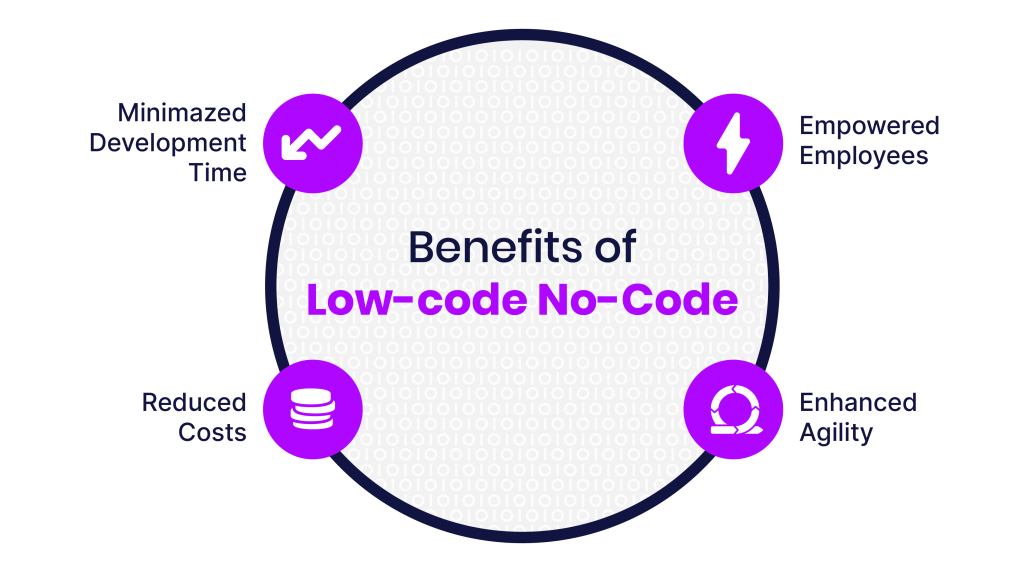Low-Code No-Code Works Really Well… In Some Cases
Techies
Low-Code No-Code Works Really Well… In Some Cases
Low code no code technology offers stakeholders with little to no coding experience the ability to seamlessly prototype, test, and refine products, drastically accelerating the innovation-to-market pace. However, this does not completely discard the use of traditional coding.
Businesses whose workflow heavily relies on software-based systems are often faced with two choices. Build their own system, or buy it in. In other words, they either invest the time and money in creating custom software or acquire an off-the-shelf product, which might have limited customization options. The former, while highly effective, can be expensive and time-consuming, and the latter could well be less than satisfactory. But what if there were a third option?
Enter low-code no-code software, a new approach to software development, and a potential solution many businesses are looking for. However, is it a reliable one-and-done alternative to textual coding? Let’s find out.
What is low-code no-code?
Low-code no-code platforms are visual-based development environments that let businesses create applications quickly and easily. Through intuitive interfaces, drag-and-drop menus, and pre-build components, users can design, implement essential functionalities, and automate processes, often requiring minimal to no coding expertise. Thanks to the democratizing nature of low-code no-code, a wider range of people can contribute to the development process, from business analysts and marketers to process automation specialists and even citizen developers with varying degrees of programming background.
Benefits, and more benefits!
There are several benefits associated with a move to a low-code no-code environment; here are just a few of them:
- Minimized development time: Adopting low-code no-code significantly reduces development time compared to traditional methods, enabling businesses to bring new applications to market faster.
- Reduced costs: Building applications in-house often proves expensive and requires hiring and managing professional developers. Low-code no-code offers a more cost-effective model for building applications without incurring significant upfront costs.
- Empowered employees: Low-code no-code tools motivate non-technical stakeholders to contribute to software development and promote a culture of innovation and problem-solving within different departments. In turn, this can free up valuable time for professional developers to focus on more complex tasks.
- Enhanced agility: In response to changing market demands and evolving customer needs, businesses can use low-code no-code tools to build and deploy new applications with agility, accelerating their innovation pace and aptitude for adaptation.

Beware, there are pitfalls!
Low-code no-code is not a one-stop shop capable of solving every problem. The user-friendly side of it often overshadows some of its underlying intricacies. Therefore, there are some notable caveats to consider when relying on low-code no-code tools, such as:
- Management challenges: Uncontrolled low-code no-code development can lead to the emergence of “shadow IT,” where unauthorized applications are created outside of IT’s oversight, potentially leading to security and maintenance issues. To mitigate these risks, businesses need to establish clear governance policies and guidelines for low-code no-code development.
- Scalability limitations: While low-code no-code excels at building basic applications and automating routine tasks, complex enterprise-wide systems often require professional development expertise for scaling and integration with existing infrastructure.
- IT involvement: Despite the “no-code” label, some IT involvement is usually necessary, especially when dealing with mission-critical systems or integrating low-code no-code applications with complex back-end systems, to ensure security, compliance, and overall system health.
Low-code no-code as a culture
To reap as many benefits as possible from using low-code no-code, businesses need first to establish a clear understanding of the approach and then proactively seek ways to smoothly incorporate it within their workflows without disrupting running operations.
- Establish clear governance: Define which low-code no-code tools are approved for use and set guidelines for developer activity, including training requirements, application approval processes, and change management procedures.
- Endorse joint effort: Encourage collaboration between staff/citizen developers and your IT professionals throughout the development lifecycle, from initial planning and design to deployment and ongoing maintenance. With that, you help ensure that applications are built according to industry standards, meet security protocols, and integrate seamlessly with existing systems.
- Educate and train: Equip department managers and developers with the necessary knowledge and skills to utilize low-code tools effectively. This can involve providing training on specific low-code no-code platforms, best practices for application design and development, and data security principles.
- Upgrade infrastructure: Invest in analytics and infrastructure to support data governance and scalability, involving the implementation of data management solutions, scaling application hosting platforms, and establishing processes for monitoring and maintaining low-code no-code applications.
Wrapping up
We have established that low-code no-code development is not a replacement for traditional methods but rather a valuable addition to the software development toolbox. By understanding its strengths and limitations, businesses can use low-code no-code to address resource constraints, accelerate innovation, and empower their workforce to contribute to the digital transformation journey. While it can be a powerful tool for businesses of all sizes, it’s important to use low-code no-code strategically and situationally to maximize its benefits and mitigate potential risks.





